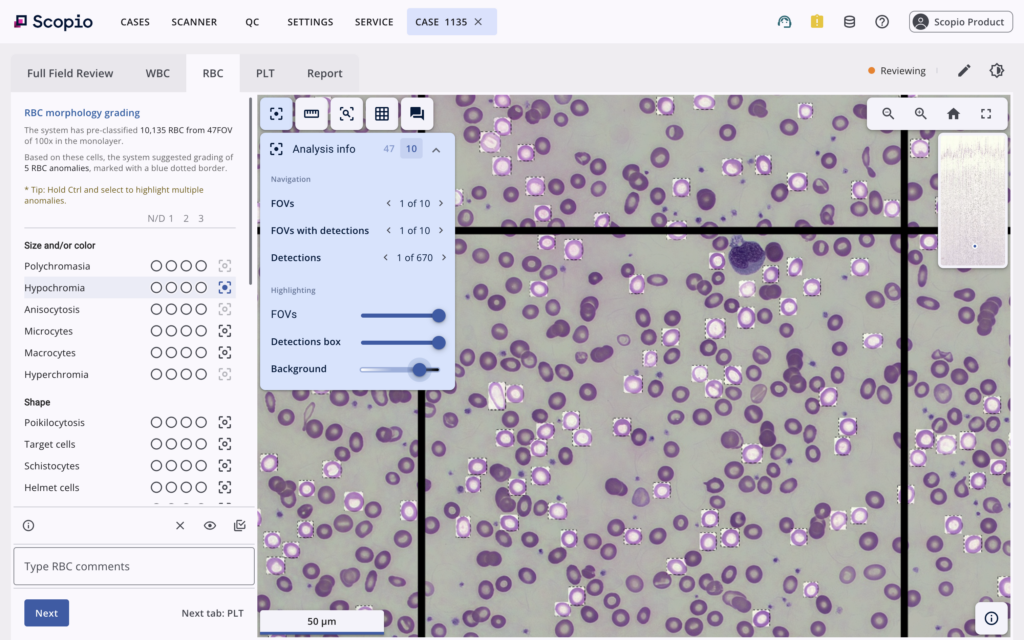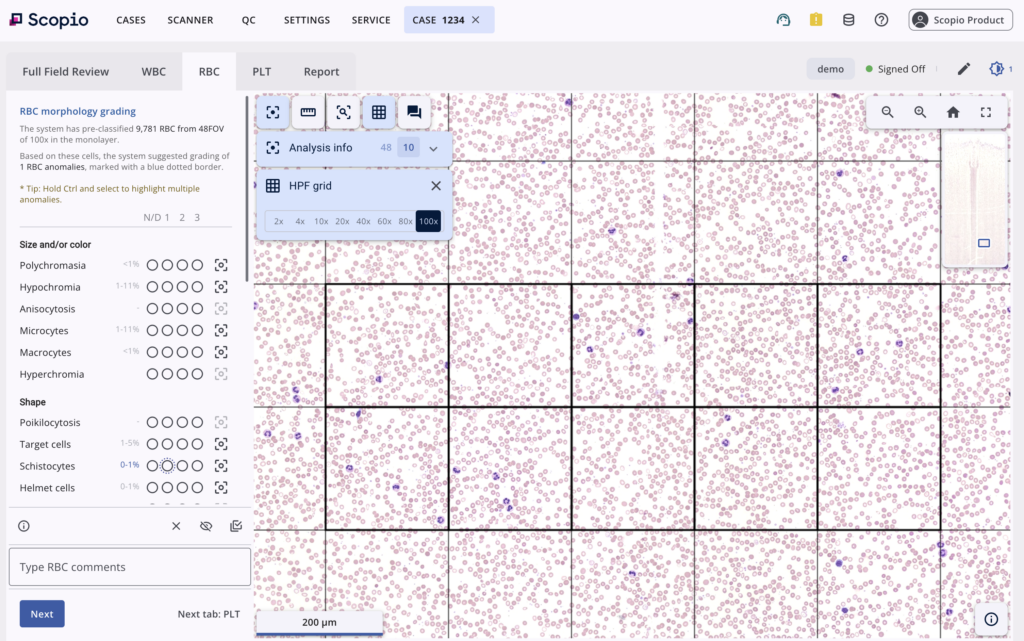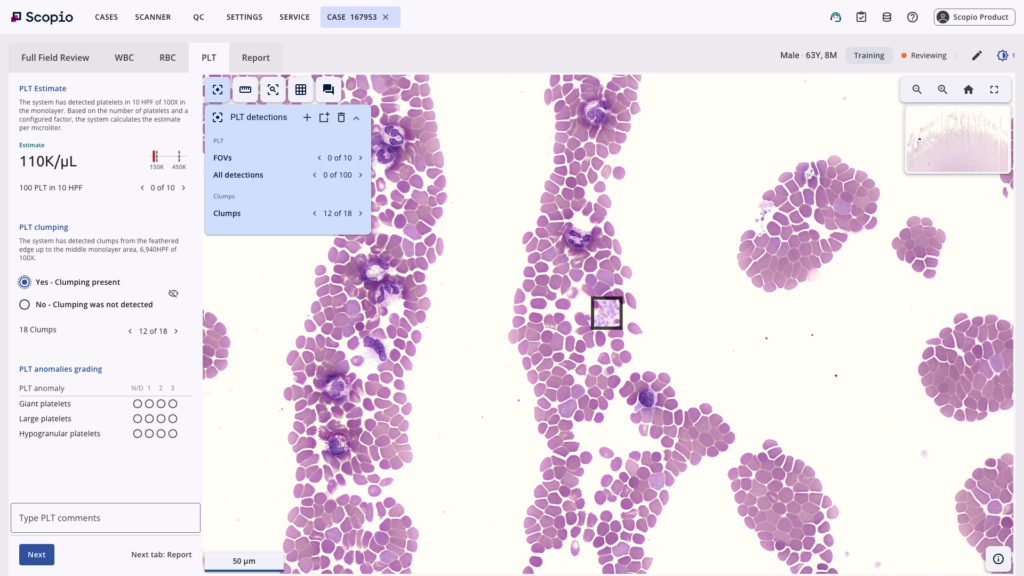Ever since we introduced our Full-Field Peripheral Blood Smear Application (FF-PBS), hematology laboratories have been using it to reduce turnaround time for PBS review by 60% and significantly increase workflow efficiency. Unlike other digital solutions, the FF-PBS reveals a full-field image of the sample at 100x magnification, giving lab professionals a view of all regions of clinical interest, including the feathered edge.
Scopio’s full-field approach to blood cell identification, estimation, and pre-classification now spans RBCs, WBCs, and platelets — including platelet clump detection. In addition to providing AI decision support for WBC and platelets, the latest release of the FF-PBS Application incorporates an innovative Red Blood Cells AI Decision Support System (RBC-DSS) that affirms a fully digital, full-field, and fully remote* workflow.

Here’s a closer look at the three key advancements that set it apart.
Scopio’s AI-Based Decision Support System (DSS) enhances conventional analysis methods by examining over 10,000 cells and pre-grading 22 morphological parameters of red blood cells (RBCs). The introduction of RBC-DSS streamlines and standardizes the digital review process, adds a layer of detection and quantification beyond the current standard of review, and adds further efficiency to the workflow process.
The DSS provides insights on morphological parameters such as variations in the size, shape, and color of RBCs as well as the intracellular inclusions. 2 Without laborious review of the sample and eyeballing the percentage of morphological abnormalities, there’s more time to focus on cells of clinical interest.1
The detection of clinical significant morphological abnormalities with a 10,000-cell sample can potentially promote accurate diagnosis and improve disease state monitoring.
We all know that schistocytes and parasitic inclusions are of particular clinical significance among the 22 RBC abnormalities pre-graded.
The presence of schistocytes on a peripheral blood smear (PBS) might indicate an hematological emergency that requires prompt intervention.
Scopio’s RBC AI-DSS enables a more accurate parasite load estimation, and detects and quantifies red blood cell fragments. A comprehensive review of such a large number of cells by the RBC-DSS can improve the chances of detection of these significant morphologic abnormalities, helping determine disease severity and aiding precise treatment planning.

The feathered edge is particularly important for viewing platelet clumps.3
The RBC-DSS provides automated platelet clump detection by analyzing the scanned area, including the feathered edge, at unprecedented 100x oil-immersion resolution-equivalent for every scan.
Expert reviewers can view both large and small platelet clumps at the feathered edge and in the monolayer, always in context.

In the absence of a full-field view at high resolution, reviewers can easily miss or underestimate platelet clumps, and it may be difficult to differentiate between actual low platelet counts or pseudothrombocytopenia, which can negatively impact decision-making for critical procedures where accurate platelet information is vital for patient care.
With Scopio’s AI-powered PBS application built on full-field imaging technology, you can bring the full power of digital morphology to your hematology lab with no compromises. Now with an additional layer of RBC and platelet AI capabilities in our user-friendly platform, the FF-PBS Application eliminates the need for time-consuming manual microscopy, giving your lab an advantage in efficiency, accuracy, and patient care.
*from the secure hospital network
Sign up for our blog and stay informed with the latest news and developments directly from the frontlines of hematology. And for a demo of the new RBC-DSS, reach out to…
Disclaimer: Scopio’s X100/ X100HT with Full-Field Peripheral Blood Smear™ Application is CE marked and FDA Cleared. The availability of the RBC-DSS capability may vary by region. While this technology is not yet available for commercial use in the United States and CE-countries, we are actively working to make it accessible as well as in additional regions.